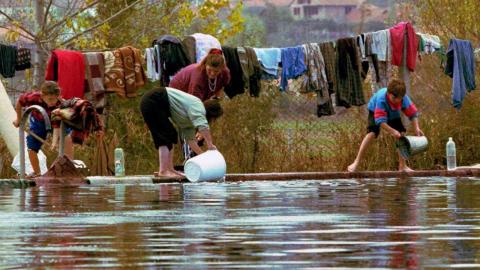Innocence Lost: Childhood Memories of the Kosovo War

It was a snowy day in December 1998 and Besnik Rustemi's family was waiting for their village of Slivove/Slivovo to come under fire.
Rustemi, then six years old, was playing in his neighbours' yard with a friend. Meanwhile, his new rubber boots were waiting for him in his bedroom, ready to be worn whenever his family decided it was time to flee.
Slivove/Slivovo had been surrounded by Serbian forces for several weeks after a Serbian policeman from Gjilan/Gnilanje had been killed by the Kosovo Liberation Army, KLA, and villagers were expecting a revenge attack.
However, recalled Rustemi, who is now a social worker, a delegation from the OSCE's Kosovo observer mission then arrived, and as a result, the Serbian forces left.
"A couple of weeks later, the Recak massacre happened, which led to the NATO bombing [of Yugoslavia]," he said.
Recak/Racak is just ten kilometres away from Slivove/Slivovo. It was there on January 15, 1999 that Serbian force killed around 45 Kosovo Albanians - a massacre that was discovered by the OSCE mission and became a key argument for NATO to intervene militarily to end the conflict.
One of the victims was captured, tortured and beheaded near his house, and his head was only found later.
Rustemi shuddered as he thought of the massacre, which might equally have happened in his own village.
"Our village has a connection to this incident because there was a headless corpse from the Recak massacre, and we say that apparently the head was meant to have been taken to my village in revenge and sent to the family of the Serbian policeman in Gjilan/Gnilanje to tell them that their son had been avenged," he said.
By this time however, he and his family were up in the Sharri mountains, heading for...
- Log in to post comments









